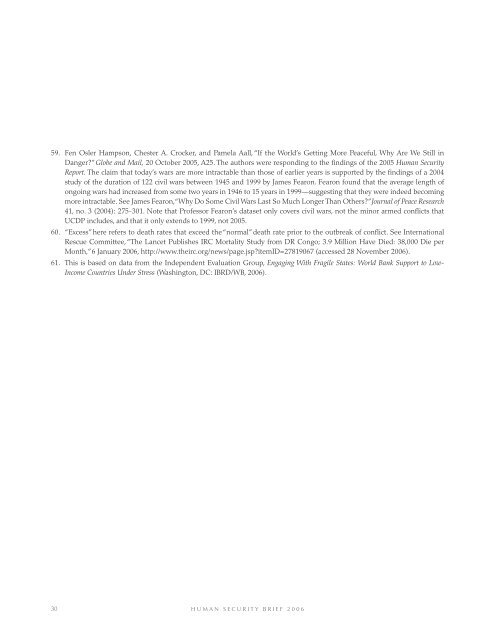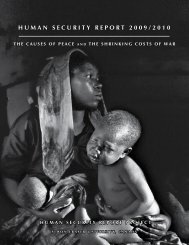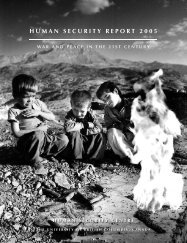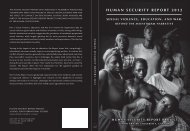H U M A N S E C U R I T Y B R I E F 2 0 0 6
H U M A N S E C U R I T Y B R I E F 2 0 0 6 - Human Security Report ...
H U M A N S E C U R I T Y B R I E F 2 0 0 6 - Human Security Report ...
Create successful ePaper yourself
Turn your PDF publications into a flip-book with our unique Google optimized e-Paper software.
59. Fen Osler Hampson, Chester A. Crocker, and Pamela Aall, “If the World’s Getting More Peaceful, Why Are We Still inDanger?” Globe and Mail, 20 October 2005, A25. The authors were responding to the findings of the 2005 Human SecurityReport. The claim that today’s wars are more intractable than those of earlier years is supported by the findings of a 2004study of the duration of 122 civil wars between 1945 and 1999 by James Fearon. Fearon found that the average length ofongoing wars had increased from some two years in 1946 to 15 years in 1999—suggesting that they were indeed becomingmore intractable. See James Fearon, “Why Do Some Civil Wars Last So Much Longer Than Others?” Journal of Peace Research41, no. 3 (2004): 275-301. Note that Professor Fearon’s dataset only covers civil wars, not the minor armed conflicts thatUCDP includes, and that it only extends to 1999, not 2005.60. “Excess” here refers to death rates that exceed the “normal” death rate prior to the outbreak of conflict. See InternationalRescue Committee, “The Lancet Publishes IRC Mortality Study from DR Congo; 3.9 Million Have Died: 38,000 Die perMonth,” 6 January 2006, http://www.theirc.org/news/page.jsp?itemID=27819067 (accessed 28 November 2006).61. This is based on data from the Independent Evaluation Group, Engaging With Fragile States: World Bank Support to Low-Income Countries Under Stress (Washington, DC: IBRD/WB, 2006).30H U M A N S E C U R I T Y B R I E F 2 0 0 6






